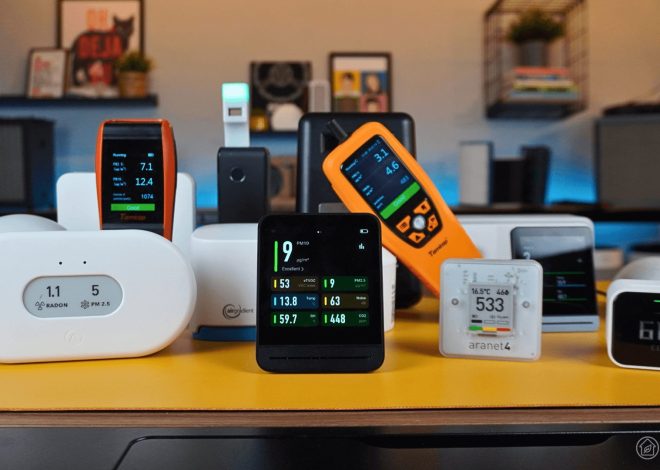Maximize the Effectiveness of Your Smoke Detectors: 5 Essential Tips

Maximize the Effectiveness of Your Smoke Detectors: 5 Essential Tips
Smoke detectors and fire alarms are essential safety features in nearly every American home. Their primary function is to alert residents at the first signs of fire, offering vital protection against one of the most destructive events a household can face. A home fire can cause irreparable damage to both property and family members, so having an alarm system that reacts promptly can be life-saving. Here are five tips to help you make the most of your smoke alarms and enhance your home’s fire safety.
1. Position Your Smoke Detectors Thoughtfully
When it comes to smoke detectors, strategic placement is key. There are several areas in your home that are more likely to experience fires, and placing alarms in those spots increases their effectiveness. For instance, install detectors in areas such as the laundry room, basement, and above the stove where fire hazards are most common.
2. Ensure Adequate Coverage for Your Home
One smoke detector is often insufficient for larger homes. If a fire ignites in a kitchen on the lower floor and the detector is on the upper floor, you may not hear the alarm until it’s too late. The general recommendation is to install at least one smoke detector on each floor to ensure early detection. Additionally, the alarms provide crucial warnings that give your family the time they need to evacuate safely in case of a fire.
Check your local building codes and consult with experts to determine the appropriate number of smoke detectors for your home. Resources like the National Fire Protection Association (NFPA) can also offer guidance. If you have a Vivint Smoke Detector, it can sync with your entire Vivint system for comprehensive coverage.
3. Use the Vivint App to Stay Informed
The Vivint app is a powerful tool for home protection. With real-time updates, it keeps you informed about the status of all devices inside and outside your home. Through the app, you’ll receive notifications via email or text whenever there are changes to your home’s security, even if you’re not there.
Beyond smoke alarms, the app can monitor carbon monoxide detectors as well. Since carbon monoxide is an odorless and colorless gas, having a detector is crucial for safety. Vivint offers a wireless carbon monoxide sensor that is battery-operated and integrated into the system, offering an added layer of protection for your home.
4. Regularly Test and Replace Batteries
Like all battery-powered devices, the batteries in smoke detectors eventually lose their charge. While some batteries are designed to last for several years, most need to be replaced every year or two to maintain effectiveness and prevent false alarms. A smoke alarm without a functional battery can fail to alert you in an emergency, leaving your family vulnerable when it matters most.
Remember to test your smoke detectors monthly and replace the batteries when needed, including those in carbon monoxide detectors.
5. Connect Your Devices to a Monitoring Service
Many homeowners neglect to replace outdated smoke detectors, but doing so can significantly enhance safety. While traditional detectors emit an alarm when smoke is detected, they don’t notify emergency services or send alerts to your phone. Vivint’s smoke detectors, however, are linked to professional monitoring services, which alert emergency responders the moment smoke is detected, ensuring swift action.
If you already have hardwired smoke detectors, you can add a Vivint FireFighter device. This battery-operated sensor listens for alarms from existing detectors and notifies your Vivint Smart Hub, which in turn sends you a notification and alerts emergency services.
Understanding How Smoke Detectors Work
There are two main types of smoke detectors: photoelectric and ionization. Photoelectric detectors shine a light across a chamber, and when smoke enters, it reflects the light onto a sensor, triggering the alarm. These alarms are especially effective for detecting smoldering fires before they develop into full-blown flames.
Ionization detectors, on the other hand, use radioactive material to ionize air in a chamber. When smoke particles interfere with the ionized current, the alarm is triggered. These detectors are often used in kitchens, where they excel at detecting flaming fires caused by cooking.
If you want the best of both worlds, consider installing dual-sensor detectors, which combine the features of both photoelectric and ionization alarms for maximum coverage.
Vivint Smoke Detectors
Vivint’s smoke detectors are battery-operated devices that detect both smoke and rapid heat changes, providing the earliest possible warning in case of a fire.
Common Questions About Smoke Detectors
Do Smoke Detectors Have Lights?
Some models feature LED lights that indicate the detector is functioning properly.
What Kind of Batteries Do Smoke Detectors Use?
Different smoke detectors use various types of batteries. While older models typically used 9V batteries, modern detectors usually run on AA or AAA batteries. Vivint’s smoke detectors use three AAA batteries.
How Often Should You Change the Batteries?
The U.S. Fire Administration recommends changing the batteries in your smoke detectors at least once or twice a year. Additionally, it’s a good idea to test your detectors every month to ensure they’re working correctly.
What Are the Best Smoke Detectors?
While there are many options on the market, Vivint’s smoke detectors stand out for their integration with your Vivint system, offering superior protection and monitoring.
What Is the Purpose of a Smoke Detector?
Smoke detectors are designed to detect smoke and emit an alarm to alert homeowners of a potential fire, giving them time to evacuate and seek help.
Get the Best Protection with Vivint
Your family deserves top-notch protection. With Vivint, you can rest assured that your home is in safe hands, with reliable smoke detection and professional monitoring.













